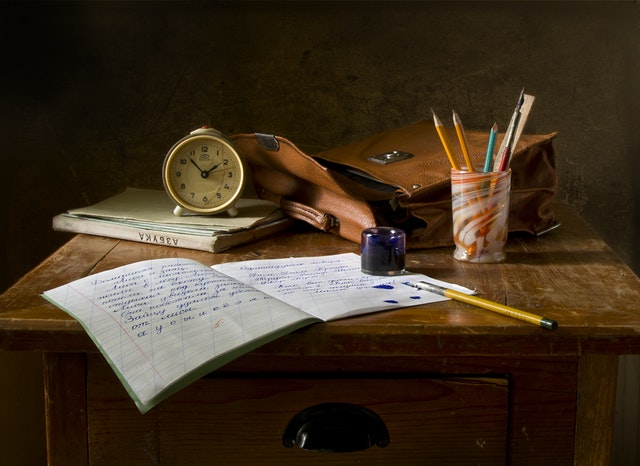ANTIQUE AND RARE BOOKS APPRAISAL
When faced with a deluge of “rare old tomes” how do you sort and separate the valuable finds? Consider the following before contacting a qualified appraiser of rare or antique books.
We don’t read as much as we used to as we now have a more varied menu of life options and many of us wonder what to do with books that we have inherited or our own collected libraries that we or our heirs have little interest in maintaining.
Titles
We begin with the titles. Catcher in the Rye? For Whom the Bell Tolls? To Kill a Mockingbird? As reading was a major pastime (no TV) in the late 1800s and early 1900s, the printing of books, magazines and broadsides were the distraction of the day. Many fine volumes were written but unless the title endured the test of time as a real classic, it probably has not risen to be a collector’s valuable prize for sale or for donation.
The Heir
If you are an heir to known collectors who had an inventory of their library, they probably knew what information was important to document. This goes a long way for a rare or antique book appraiser to be able to research and judge the current market value. If they weren’t sophisticated collectors, but, rather avid readers, consider the following…
The Dust Jacket
Look at your books. Do you see a cloth or paper dust jacket protecting the covers? Throughout the nineteenth century, nearly all dust jackets were discarded at or soon after purchase. Many were discarded in bookstores as the books were put out for display, or when they were sold; there is evidence that this was common practice until World War I. The period from the 1820s to 1900 was a golden age for publishers’ decorative bookbinding, and most dust jackets were much plainer than the books they covered, often simply repeating the main elements of the binding decoration in black on cream or brown paper.
Cloth dust jackets became popular late in the nineteenth century. These jackets, with the outer cloth usually reinforced with an under-layer of paper, were issued mostly on ornamental gift editions, frequently in two volumes and often with a slipcase. Other types of publishers’ boxes that were also popular in the second half of the nineteenth century included those designed to hold multi-volume sets of books. The jackets on boxed volumes were often plain, sometimes with cutouts on the spine to allow the title or volume numbers of the books to be seen.
After 1900, book bindings became less decorative making it cheaper for publishers to make the jackets more attractive. By 1920 jackets were regularly printed with multiple colors, broad advertising and blurbs; even the underside of the jacket was a new site used for advertising.
Dust jackets from the 1920s and later were often decorated in art deco styles sought by collectors. Some of these are worth far more than the books they cover. The most famous example is the jacket on the first edition of The Great Gatsby by F. Scott Fitzgerald, published in 1925. Without jacket, the book brings $1,000 or so. With the jacket it can bring $20,000 or $30,000 or more, depending on condition.
First Editions
Another key to establishing value is to uncover whether or not it is a first edition. There are standard identification criteria that first editions conform to because most, not all, first edition books follow an established identification method established by each book publisher. These first edition criteria are details about what a book looked like when it was initially printed as a first edition. These details include certain codes on the copyright page, the type of the binding, and particular text on the dust jacket.
In addition to the first edition criteria, there are occasionally points of issue that describe a part of a book that changes during the first printing without the publisher’s standard first edition identification marks changing, thus creating some copies of the first edition that have the “point”, and some that do not have the “point”. The most common type of first edition points of issue are typographical mistakes that were changed during the first printing. In these cases, the copies with the mistake are more desirable because they represent the earliest state of a first edition. Those first sheets now form the issue point that collectors use to determine how early in the printing process the sheet was printed. Mark Twain’s The Adventures of Huckleberry Finn has over seven documented (and corrected) mistakes during the printing process. If you have all of them (or many of them) in your copy, it can be worth over $10,000. Other copies with a few mistakes are usually worth between $500-1,000. These issue points can be found in online references to bibliographical information gathered on each book.
Signed Copies
Always look for author autographed books. An author’s signature and possibly a personal comment can mean an increase in value of ten times or more of the book in most cases. For example, an unsigned copy of F. Scott Fitzgerald’s Tender is the Night without a dust jacket might bring around $300. With a simple signature, it could bring $8,000. In November of 2004 a copy that was signed and given to the poet Archibald MacLeish brought $23,500.
As Part of an Archive
Books may contain compilations of documents and papers that are part of a larger collection, often with original handwritten passages and notes. There are also volumes to sets that include letters, state documents and rare engravings such as “The Life and Works of Abraham Lincoln” by Nicolay and Hay. The 24th volume contains 30+ such gems that increase the value of the set many fold.

